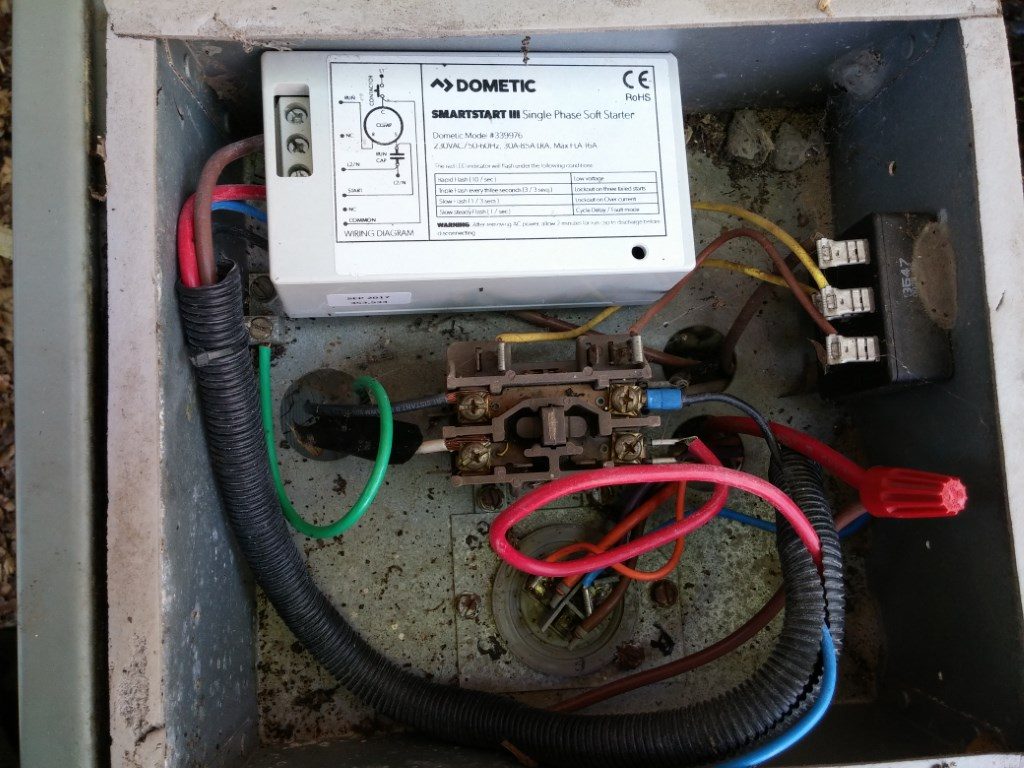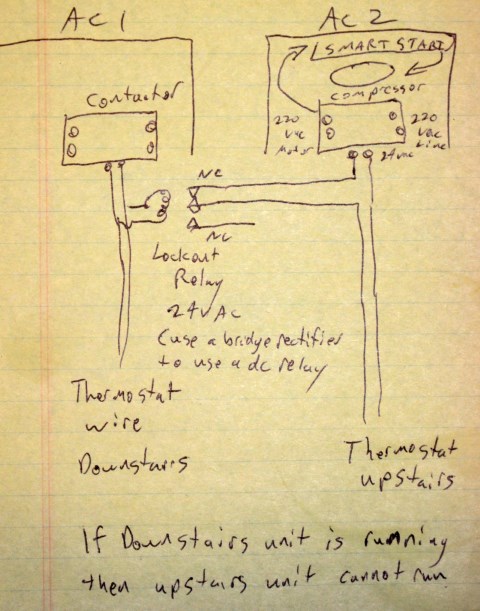It has been in the 80s here for a week. When the nights were still dipping down low enough at night the house would stay cool enough. Not now. It is time to fire up the a/c. The solar-powered a/c.
I have written about combining solar and a/c before. Go back in the blogs to find the articles. I’ll update some things, here.
The house started getting undeniably warm, so it was time to get the a/c going. Normally that would just be the flip of the switch, but I tend to mess with stuff. Last autumn I was rigging the heat pump (downstairs unit) to run on solar when I bumped something or knocked something loose. The heat pump would not pump heat.
Well, no worries, I have not used it in years, anyway. Not for heat, at least. I have an outdoor wood furnace that runs on beetle-y trees I need to cut down anyway. It is super efficient and costs practically nothing to run if you have an unlimited supply of wood and a solar chainsaw. The current generation of 40v and 80v rechargeable saws is great! So I just forgot all about the heat pump, having other things to do.
My first attempt at firing up the a/c (upstairs unit) yielded nothing. The downstairs unit was missing the lockout relay, so nothing was working. I replaced it and life is cool.
If you are planning a house, consider inverter or variable speed units. If the layout is simple, consider mini-splits. Here is why.
These things are super efficient. My rattly old units were “hi-efficiency” at SEER 13 when new. These inverter units run 18-25 SEER. That means a low power consumption even if you don’t have solar. If you do have solar, there are more benefits in not having to have as many solar modules, batteries, charge controllers. You don’t need as big an inverter. A friend and I remodeled a carriage house in Georgia, replacing two loud, inefficient SEER8 window units with a 2-head mini-split. It is awesome! It doesn’t start and stop. It speeds up and slows down. You don’t even know it is running most of the time.
A conventional a/c compressor starts up with a tremendous power surge. My sturdy 5kw inverter would not start either of my conventional units. An inverter a/c eases its way into operation and the inverter barely knows anything is going on.

Wait a minute. Time for definitions. My 5kw inverter is the big box that turns the solar DC volts into household AC volts. The inverter in the a/c is a variable speed controller. Got that?
You either make it easy on your solar equipment or you buy more of it. Maybe better to spend a little more on the a/c than a lot more on everything else.
Here is a curious thing. A/C guys don’t seem to like variable speed split units, though the mini-splits seem to be catching on. There is more potential for something to go wrong and I think most of the techs are simply not comfortable working on them, yet.
In the meantime, if you have a legacy system, there are things you can do. Add a Smart Start device. It connects to the contactor and condenser in the outside unit, allowing the compressor to start up over 2-3 seconds instead of instantly. My 5 kw inverter does not even grunt and it settles down to a 2kw load to run the a/c.
Normally the upstairs unit, set to 71 will keep the downstairs at the target 75 degrees with no problem. Last summer, when temps frequently hit over 100 degrees, it needed a little help. I did not think it a good idea to run BOTH units at the same time, especially since the inverter was in a room that typically ran 135 degrees during the day. A LOCKOUT RELAY was installed in the downstairs outside unit. This is a simple 24v single pole double throw relay that activates when the thermostat operates that unit. When the relay clicks, it interupts the thermostat line to the upstairs unit.

Use programmable thermostats! Oh yeah, that was something else that hindered my startup. The thermostat needed a new battery. Anyway, the programmable thermostats let me set the house much cooler during the day when the free power is shining and then back off at night to save the batteries. Yes, we did have to run some at night when the temps never dropped below 80 after being 105 during the day.
Downstairs gets a boost from its larger unit, but only when needed and I don’t have to upgrade my inverter. Of course, I still need to fix the downstairs unit that I broke. Always something.
–Neal
